But I’m ashamed to admit that I don’t own a rice cooker (bad Asian, I know). So instead, I resort to making my rice in a pot on the stove top. After following the directions on the bag a couple of times, though, I was never quite happy with the results. My rice always turned out a bit… mushy. Not good. Until I finally realized that I shouldn’t follow the instructions on the bag to achieve the texture I wanted – which is light and fluffy, with a bit of a chewy bite, but not too mushy or dry. Surprisingly, but I found that it works! A bag typically calls for 2 full cups of water to 1 cup long grain brown rice, and instead I modify to 1 and 2/3 cup water for 1 cup of rice. It’s important to note that my instructions are specific to long grain brown rice, as it does vary slightly for short grain rice.
Rinse the brown rice
First, I always start by rinsing the rice grains. I was raised to always rinse my rice to remove any unwanted debris and bran dust, and I always do so except for starchy short-grain rice dishes like risotto or paella. You can rinse the rice in a clear bowl so you can easily see when the water runs clear. Otherwise, I often use a small weave strainer for easy draining.
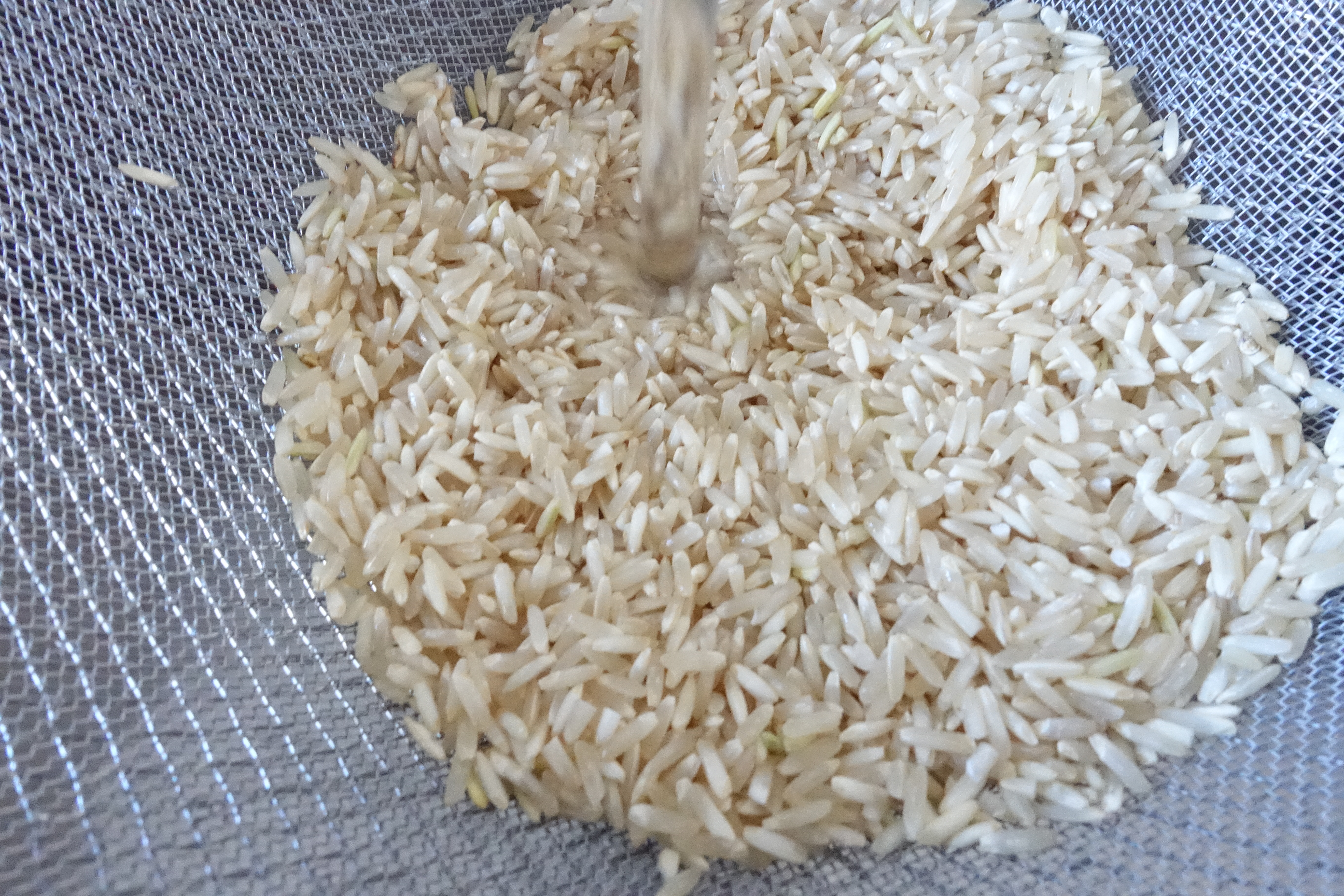
Cook the brown rice
Then add the drained rice to a medium pot (you can use a wide saucepan too), and add in the water and salt. As noted, if I’m cooking 1 cup long grain brown rice, I’ll add in 1 and 2/3 cup water. Remember, disregard the instructions on the box or bag the rice comes in that instruct you to add 2 cups.
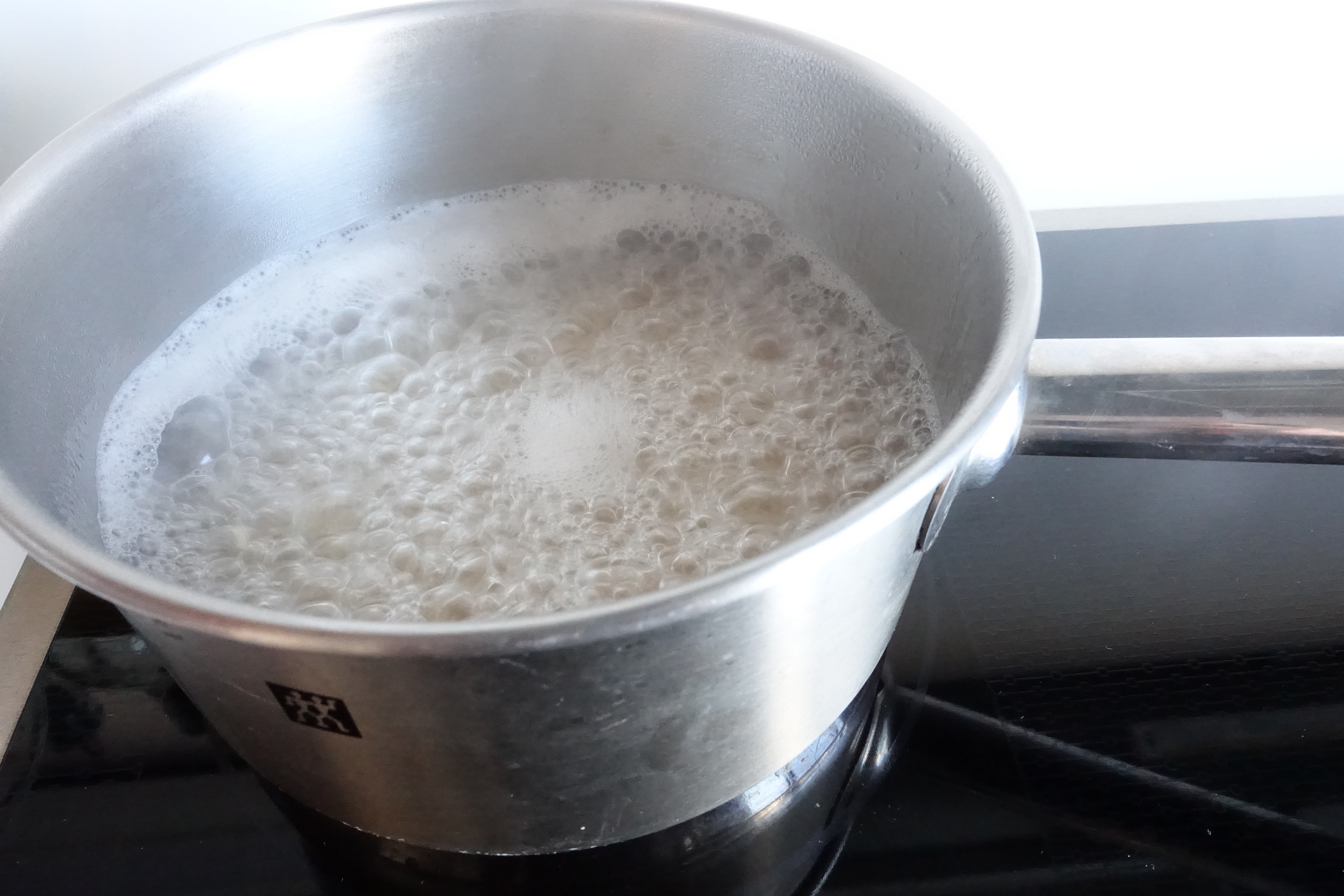
Bring the rice and water to a boil. Once boiling, reduce the heat to low and cover. Simmer for 45 minutes. Be sure not to open the lid while cooking as it will release the necessary steam to cook the rice. After 45 minutes, you can remove the pot from the heat and let stand for another 10 minutes or so to allow the extra moisture to be absorbed.
You can then remove the lid, fluff the rice with a fork and dish up with your favorite accompaniments – I’m a big fan of having brown rice in a healthy protein and avocado bowl, or underneath a homemade Thai curry. Note: 1 cup uncooked long grain brown rice will yield about 3.5 cups cooked brown rice.
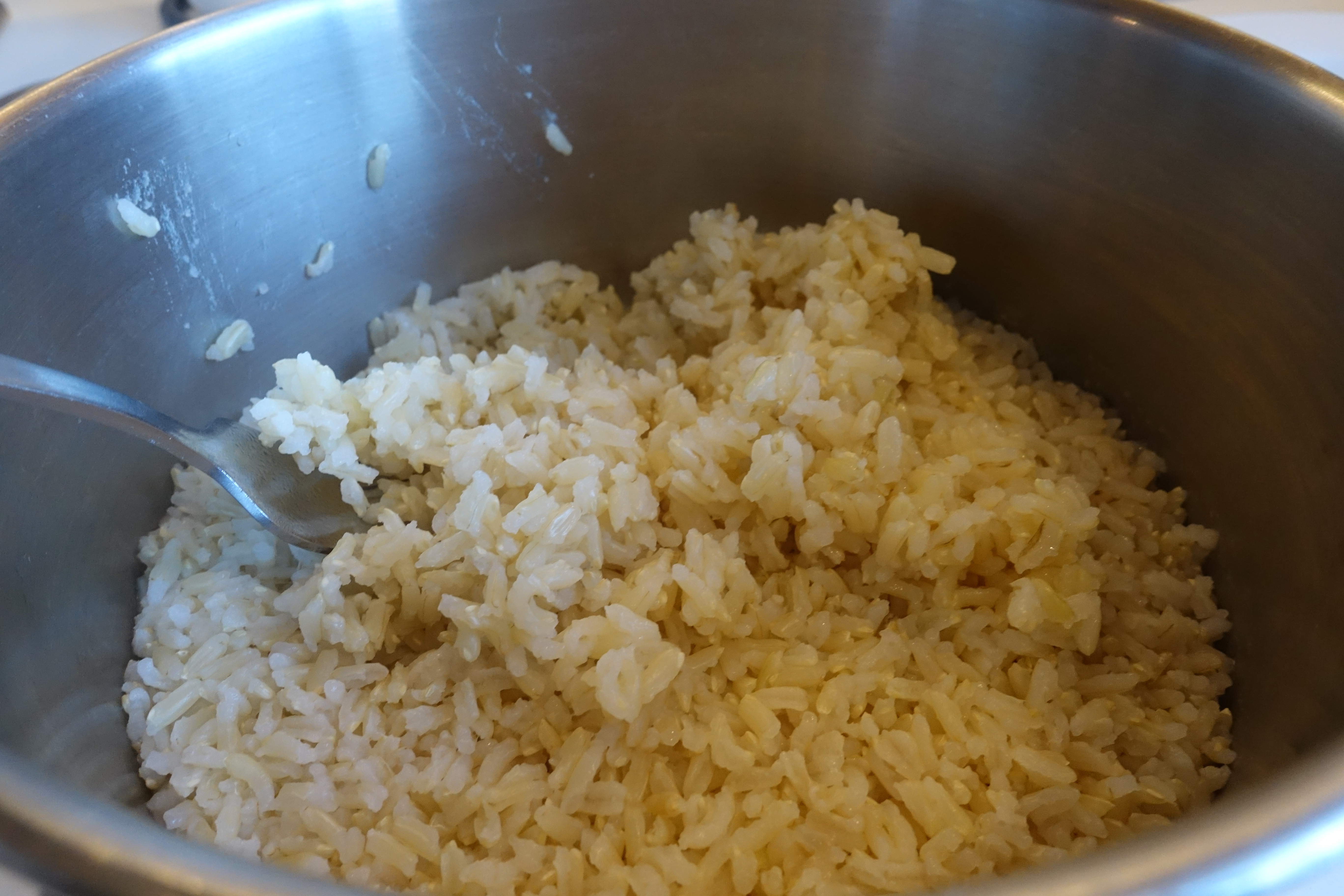
How to Cook Long Grain Brown Rice on the Stove
Print RecipeEquipment Required
- strainer (or glass bowl)
- medium pot with close-fitting lid
Ingredients
- 1 cup long grain brown rice
- 1 2/3 cup water
- 1 tsp salt
Instructions
Rinse the grains. Rinse the rice in cold water in a strainer (or bowl) until the water runs clear.
Add to pot and boil. Add rice, water and salt in a medium pot (or wide pan) over high heat. Bring to a boil.
Simmer and cover. Reduce heat to low, cover and cook for 45 minutes, until all liquid is absorbed. It's important that you do not lift the lid to check on the rice during this time.
Let sit. Remove the pot from heat and let the pot stand for 10 minutes or so, still covered.
Fluff and serve. Fluff the rice with a fork and then serve while warm.
Notes
- Most packages call for 2 cups of water, but I find 2 cups tends to make the rice too mushy.
- Brown rice can be stored in the refrigerator or freezer for future use.

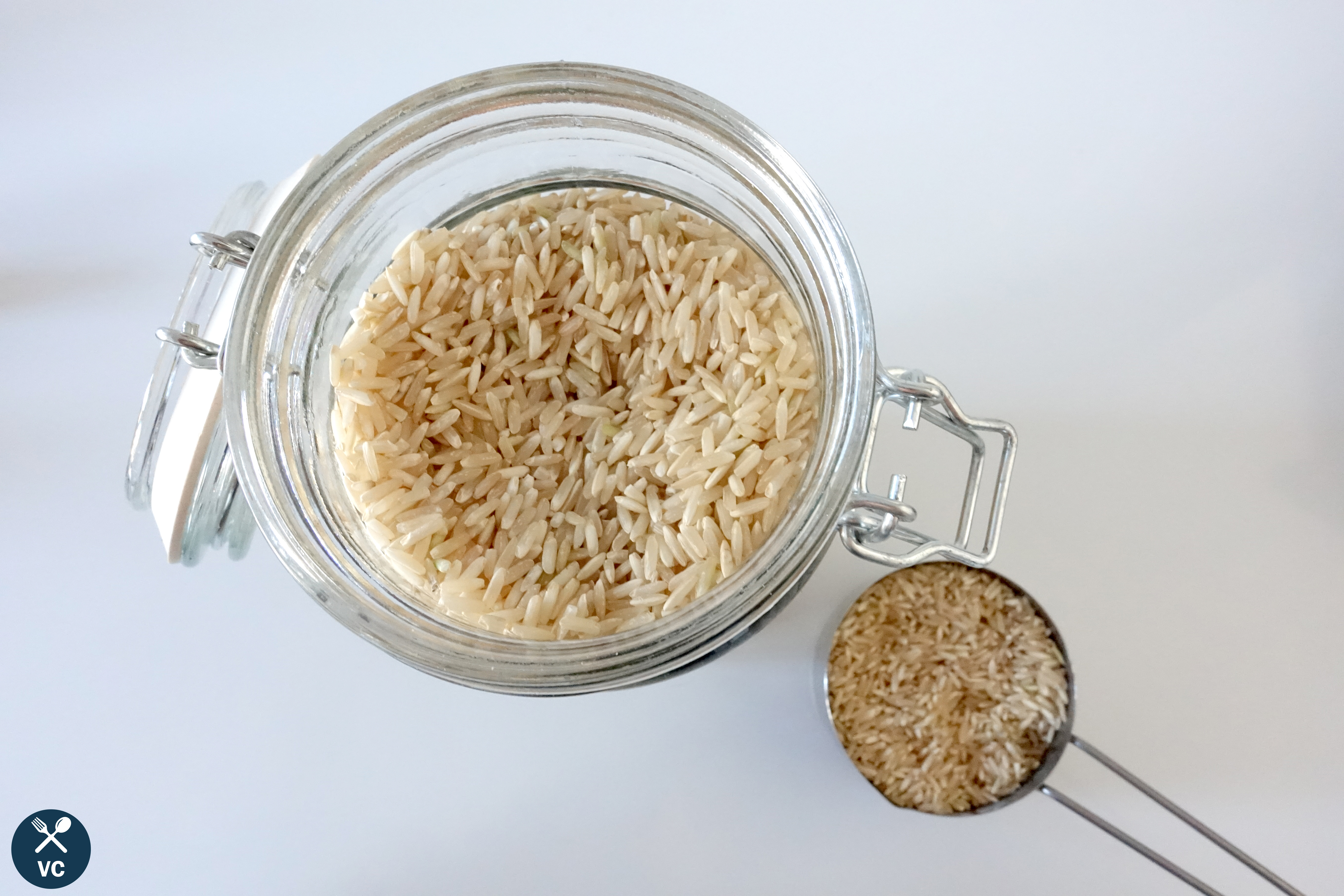
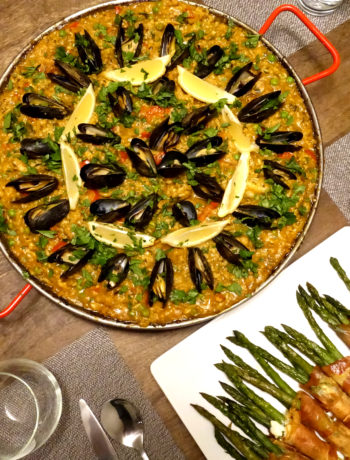


2 Comments
Easy parmesan orzo – VC in the Kitchen
August 5, 2016 at 11:07 am[…] mom was such a person. I enjoy rice, but I equally love noodles, so orzo is a perfect balance I grew up eating a lot of rice, but I equally love noodles, so orzo is a perfect balance between rice and pasta for me. Although […]
Asian turkey and avocado brown rice bowls – VC in the Kitchen
August 3, 2016 at 9:16 am[…] time. If you’re not comfortable making brown rice, I recommend you check out my “how to make brown rice” post for instructions on how to cook rice on the stove (note: the secret is to not follow […]